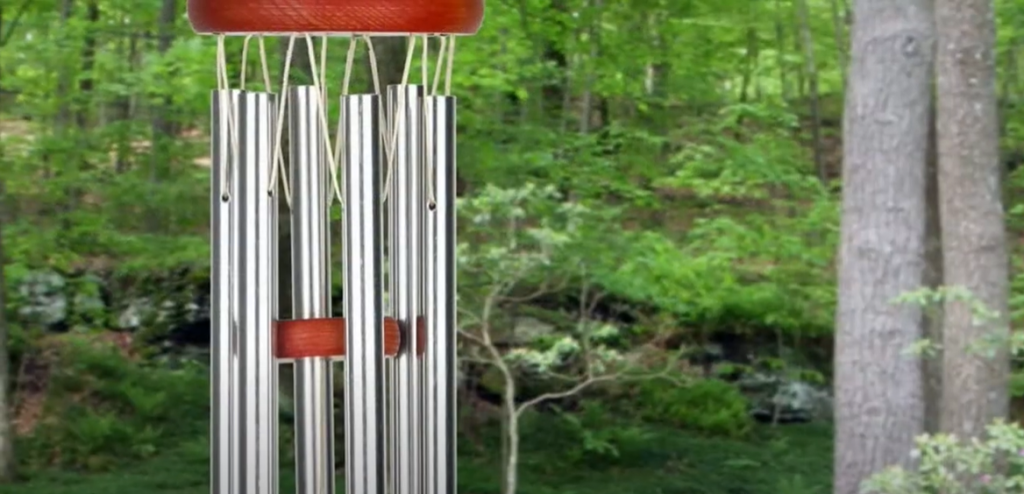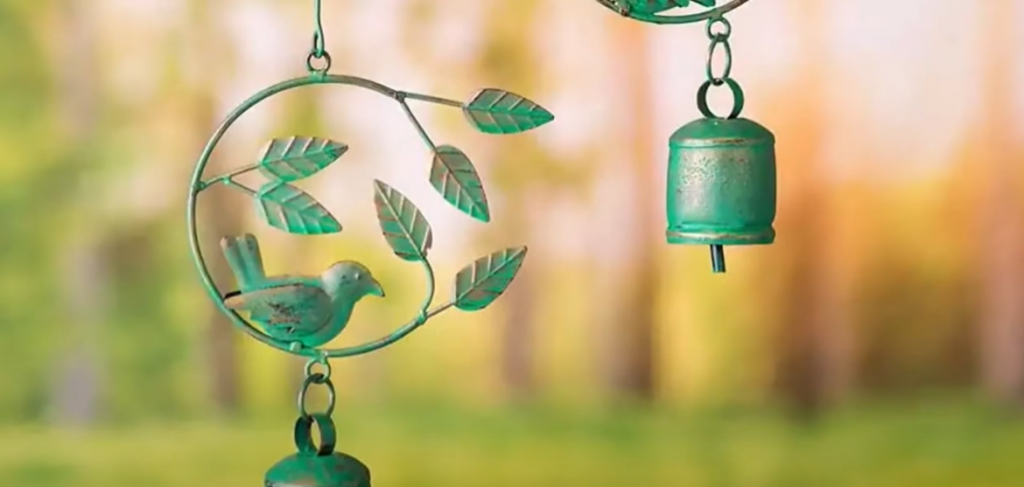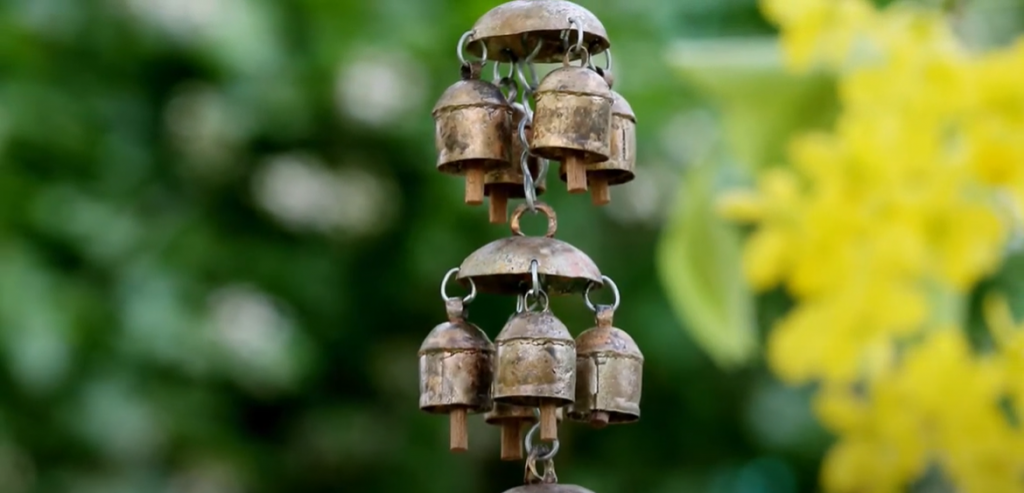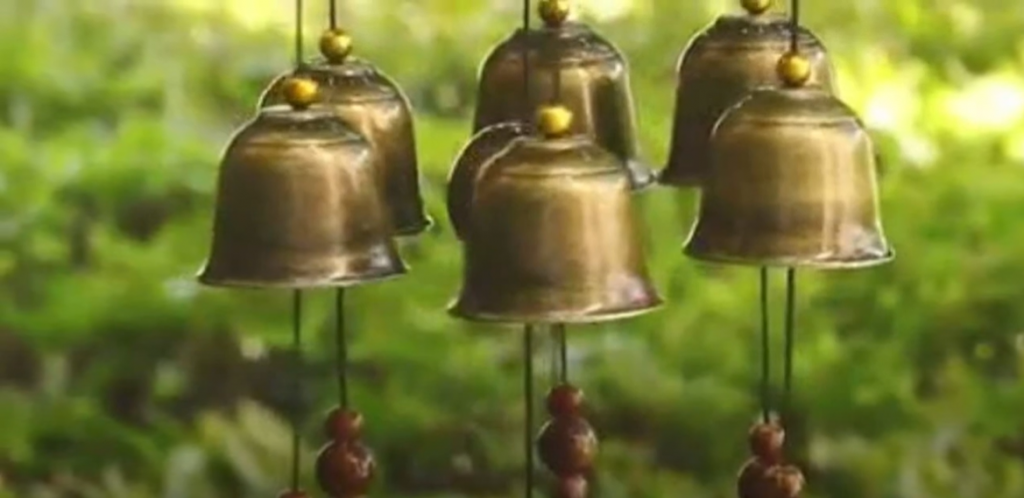As the leaves start to change color and the weather starts to get colder, many people begin to wonder whether they can leave their wind chimes out in winter. The answer is: it depends. In this article, we will discuss the pros and cons of leaving wind chimes out in winter, as well as provide some tips on how to keep them safe during this time of year.
Table of Contents
The Different Types of Wind Chimes
Wind chimes come in a variety of sizes, shapes, and materials. The type of wind chime you choose depends on your personal preference, as well as the needs and conditions of the environment where it will be hung. Here are some basic types of wind chimes:
- Aluminum Wind Chimes – These are lightweight, durable wind chimes that produce a bright sound. They can last many years outdoors without corrosion or rusting due to the aluminum material used.
- Wood Wind Chimes – These wind chimes make beautiful soft tones using wood pieces suspended from strings or rods. The wood is usually carved with intricate designs for added charm and beauty.
- Glass Wind Chimes – These chimes are made by suspending glass pieces from strings or rods and produce a soft, musical sound when the wind blows. The glass used for these chimes is often recycled or hand-blown, making them unique and special.
- Bamboo Wind Chimes – These wind chimes use bamboo tubes suspended from metal or wooden rods to create a gentle sound that’s perfect for creating a relaxed atmosphere in the garden or patio.
- Ceramic Wind Chimes – Like glass wind chimes, these use ceramic pieces attached to strings or rods to produce their distinctive sound. The material used for ceramics makes them more fragile than other types of wind chimes, so they should be hung in an area where the wind won’t be too strong.
No matter which type of wind chime you choose, it will create music in your garden that brings pleasure and beauty to your outdoor space. [1]

The History of Wind Chimes
Wind chimes have been around for thousands of years and are believed to have originated in Asia. Ancient civilizations used them as charms to ward off evil spirits and bad luck. They were also thought to bring tranquility and peace, which is why they remain popular today.
In more recent times, wind chimes have become associated with positive energy, relaxation and good fortune. Many people hang them near their home or business to attract prosperity and health.
How Do Wind Chimes Work?
Wind chimes work by creating pleasant-sounding tones when the wind blows through them. The size and material of the wind chime will determine the type of sound it produces.
There are several types of wind chimes, each with a different tone and pitch. Some are low and soothing while others are high and bright. How they interact with the wind also affects their sound—if the breeze is light, they may produce gentle tinkling noises; if it’s strong, you’ll hear more of a clanging effect.
The Benefits of Wind Chimes
Wind chimes have many benefits, both physical and psychological. Not only do they provide pleasant auditory stimulation, but they can also help to reduce stress and anxiety levels. They can also be used to create a sense of harmony in the home or office space.
The Different Types of Materials Used to Make Wind Chimes
Wind chimes are typically made from metal, wood, clay, bamboo or glass. Metal wind chimes provide a bright and cheerful sound that carries far and resonates well. Wood varieties offer a more subdued tone that is calming and soothing. Clay gives off deep bass tones while bamboo creates lighter notes. Glass wind chimes create an ethereal effect with their shimmering sounds.
How to Hang Wind Chimes
Hanging wind chimes is an art form in itself. It’s important to consider the type of material, size and design when figuring out where to place them. To get the best sound, it’s best to hang them somewhere where they will be exposed to a steady breeze—like near an open window or a large doorway.

How to Care for Wind Chimes
Even if wind chimes are designed for outdoor use, it’s important to take extra precaution when leaving them out in winter. Here are a few tips on how to care for your wind chimes in cold weather:
- Always hang them in sheltered areas and away from direct contact with snow or ice.
- Remove any debris such as leaves or dirt that may have accumulated during the summer months.
- Use waterproofing spray or oil to protect against rust and corrosion caused by moisture in the air.
- Wrap your wind chimes in plastic before storing them away for the season; this will help keep them safe from extreme temperatures and moisture buildup while they remain unused.
- Once winter is over, carefully inspect the chimes for any signs of damage from the cold weather before hanging them back up. [2]
Are wind chimes weather resistant?
Yes, some wind chimes are designed to be weather resistant. Metal chimes are usually the most durable and long-lasting option as they can handle large changes in temperature without becoming damaged. Wood varieties may not last as long but offer a more natural aesthetic. Clay, bamboo and glass wind chimes are typically more fragile and better suited for indoor use or areas with milder climates.
Factors to consider when deciding whether to take down wind chimes in winter
Before determining whether or not to bring down your wind chimes for winter, examine both their size and material components of them. For larger metal wind chimes, they can typically remain outside all year round without issue. Smaller varieties or chimes made from other materials such as wood, clay, bamboo or glass should be taken down and stored away during harsh weather conditions to ensure their longevity. Additionally, wind chimes located in areas with extreme temperatures may need extra protection against condensation and frost damage. Wind chimes are a fantastic way to add a touch of beauty and relaxation to any environment—just be sure you’re taking proper care of them!
Reasons for taking down wind chimes for winter
There are several reasons for taking down wind chimes during the winter season. First, smaller and more delicate materials such as wood, clay, bamboo or glass can be damaged by extreme temperatures or frost. Additionally, wind chimes are likely to get dirtier in wet climates and will need to be regularly wiped down and maintained if left outside. Lastly, you may want to store them away when not in use so that they remain in good condition for years of enjoyment. Ultimately, it’s up to your personal preference whether or not you take down your wind chimes during winter—just make sure your decision is based on the best interests of preserving them!
Reasons for leaving wind chimes up for winter
There are some instances when leaving wind chimes up in winter can be beneficial. For example, if they are made from metal or another durable material and are located in a sheltered area, then they may be safe to leave outdoors. This allows you to enjoy them year round without the worry of damage caused by freezing temperatures. Additionally, even if your wind chimes are made from more delicate materials, you may still choose to leave them outside during milder climates where the risk of damage is minimal. Whether or not you decide to keep your wind chimes out for winter is ultimately up to personal preference—just be sure that whatever decision you make will ensure their long-term safety!

FAQ
When should you take down wind chimes?
It is generally recommended that wind chimes be taken down in winter if they are made from wood, clay, bamboo or glass, as these materials can become damaged by extreme weather or frost. Additionally, metal wind chimes should be taken down and stored away in areas with extreme temperatures to ensure their longevity. Ultimately, the decision of whether or not to take down your wind chimes during winter should be based on what’s best for preserving them. If you do decide to keep them up during colder months, make sure they are located in a sheltered area and regularly inspected for signs of damage.
How do you keep wind chimes from rusting?
There are several steps you can take to ensure your wind chimes do not rust. First, you should keep them away from moisture and wet climates, as this can cause the metal to corrode. Additionally, consider applying a rust-resistant spray before leaving them outside for extended periods of time. If possible, store your wind chimes indoors during winter months or in areas with extreme temperatures to prevent further damage from occurring. Lastly, inspect your wind chimes regularly for any signs of rust and address the issue immediately if found. Doing these simple tasks will help keep your wind chimes looking great for years to come! [3]

What material makes the best sounding wind chimes?
The material that makes the best sounding wind chimes will depend on personal preference. Generally, metal is considered to have the most pleasant sound and can be made in a variety of shapes and sizes. However, glass or ceramic can also be effective when hit by gentle breezes. Bamboo or wood are often favored for their natural and organic tones, while clay produces a softer sound ideal for the creation of melodious tunes. Ultimately, it comes down to what type of sound you prefer—explore different materials until you find the one that works best for you! Regardless of what material you choose, make sure your wind chimes are well taken care of so they last as long as possible.
Which color wind chime is best for home?
When choosing a color wind chime for your home, take into account the overall look and feel of the space. For example, lighter colors such as white or silver can create an airy atmosphere and work well in small spaces. Additionally, vibrant colors like red, yellow, or blue can make a bold statement and add a pop of color to any room. And if you’re looking for something more subtle, neutral tones like brown or gray are perfect options that will complement most decor styles. Ultimately, it comes down to personal preference—select the color that speaks to you and fits your desired aesthetic! Whatever option you choose, make sure to properly store your wind chimes during winter months so they remain in great condition for years to come. [4]
Useful Video: Wind Chimes: 5 Fast Facts
Conclusion
So, when it comes to the question of whether you should leave your wind chimes out in the winter months or not, the answer is a definite maybe. While there are plenty of factors to consider such as temperature and material types before you make the final call, ultimately the decision should come down to personal preference and the level of care that you want to give to your wind chimes. If they’re made from durable materials with a low melting point and you happen to live in an area that doesn’t experience large temperature fluctuations throughout the year then leaving them out may be perfectly fine. However, if temperatures can drop significantly during certain times of year then it might be best to bring them indoors or cover them up until warmer weather returns. That’s why we recommend taking some time to weigh both sides and make an informed decision on which option is right for you. At the end of the day having beautiful music floating through your garden no matter what season it is never hurts!
References:
- https://www.chimetime.com/static/wind-chime-buyers-guide.html
- https://www.lifemaideasy.com/tips-on-caring-for-wind-chimes
- https://happygardens.com/blogs/news/how-to-clean-wind-chimes
- https://housing.com/news/wind-chimes-vastu






Leave a Reply